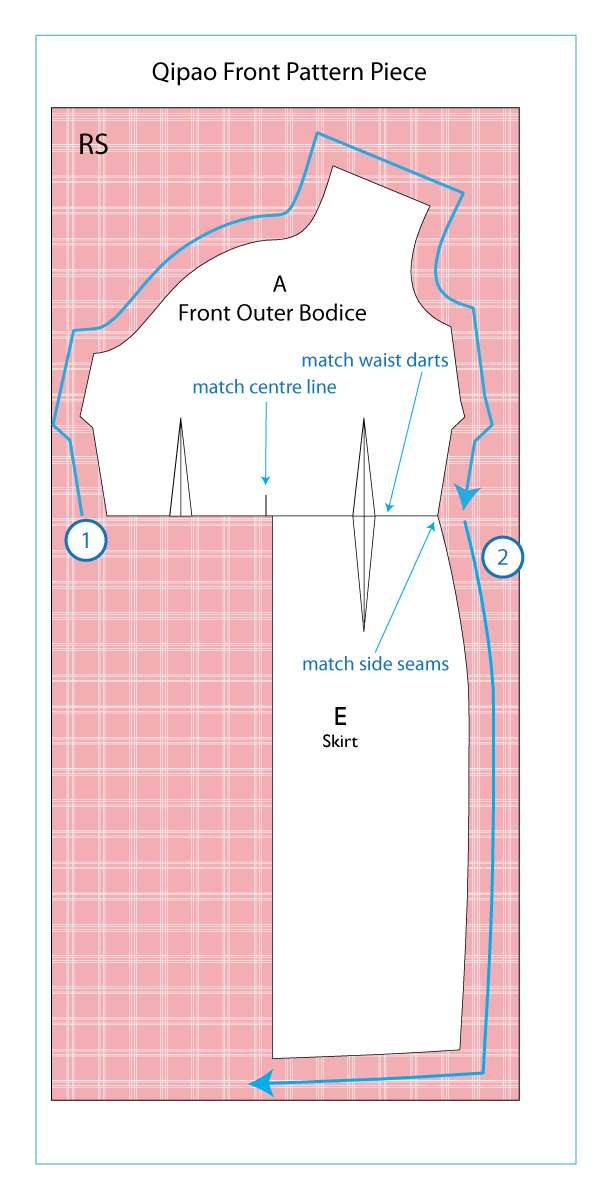Introduction
Sewing a traditional Chinese Cheongsam dress is a journey into the elegance and sophistication of Chinese culture. This classic garment, with its high collar, form-fitting silhouette, and slits that reveal a graceful stride, is a staple in the wardrobe of many who appreciate its timeless appeal. In this guide, we will walk you through the process of creating your very own Cheongsam, from choosing the right fabric to the final stitches.

Selecting the Fabric
The first step in sewing a Cheongsam is selecting the perfect fabric. Silk is the most traditional choice, but you can also opt for modern fabrics like crepe or satin for a more contemporary look. Consider the weight of the fabric, as well as its drape, to ensure it will flow beautifully when you wear it. Remember to choose a fabric that complements your skin tone and the occasion for which you’ll be wearing the dress.

Understanding the Pattern
Before you begin sewing, it’s crucial to understand the pattern of a Cheongsam. This dress typically features a high collar, a fitted bodice, and a skirt that may be either straight or flared. The pattern should also include instructions for the slits that run along the sides of the dress. If you’re new to sewing, consider starting with a simpler pattern or seeking guidance from an experienced seamstress.

Cutting the Fabric
With your fabric and pattern ready, it’s time to cut out the pieces for your Cheongsam. Pin the pattern pieces to the fabric, ensuring they are aligned correctly. Use sharp scissors to cut along the pattern lines, taking care not to stretch the fabric as you cut. Remember to leave a seam allowance, typically about 1 inch (2.5 cm), for sewing the pieces together.

Sewing the Bodice
The bodice of the Cheongsam is where the dress gets its signature shape. Start by sewing the shoulder seams, then move on to the side seams. Be sure to press the seams open for a clean finish. Next, attach the collar, following the pattern instructions for the correct placement and method. The collar should sit snugly around the neck, adding to the dress’s formal elegance.

Attaching the Sleeves
Cheongsams can have short, cap-like sleeves or be sleeveless, depending on the style you prefer. If your Cheongsam has sleeves, attach them to the armholes, ensuring they are aligned with the notches on the bodice. Sew the sleeve seams, and then attach the sleeve hems, taking care to match the grainline for a smooth, even look.
Creating the Skirt
The skirt of the Cheongsam is typically simple, with the main feature being the side slits. Sew the side seams of the skirt, and then carefully cut the slits according to the pattern, making sure they are symmetrical. Hem the bottom of the skirt, ensuring it is even all around.
Finishing Touches
Once the bodice and skirt are complete, it’s time for the finishing touches. These may include sewing on any buttons or fastenings, attaching any decorative elements like embroidery or beading, and pressing the dress to give it a crisp, polished look.
Conclusion
Sewing a Cheongsam dress is a rewarding project that allows you to immerse yourself in the rich history and artistry of Chinese fashion. With patience, attention to detail, and a love for the craft, you can create a garment that is not only beautiful but also a testament to your sewing skills. Whether you’re making a Cheongsam for a special occasion or simply to add a touch of Eastern elegance to your wardrobe, the process is sure to be a memorable one.






